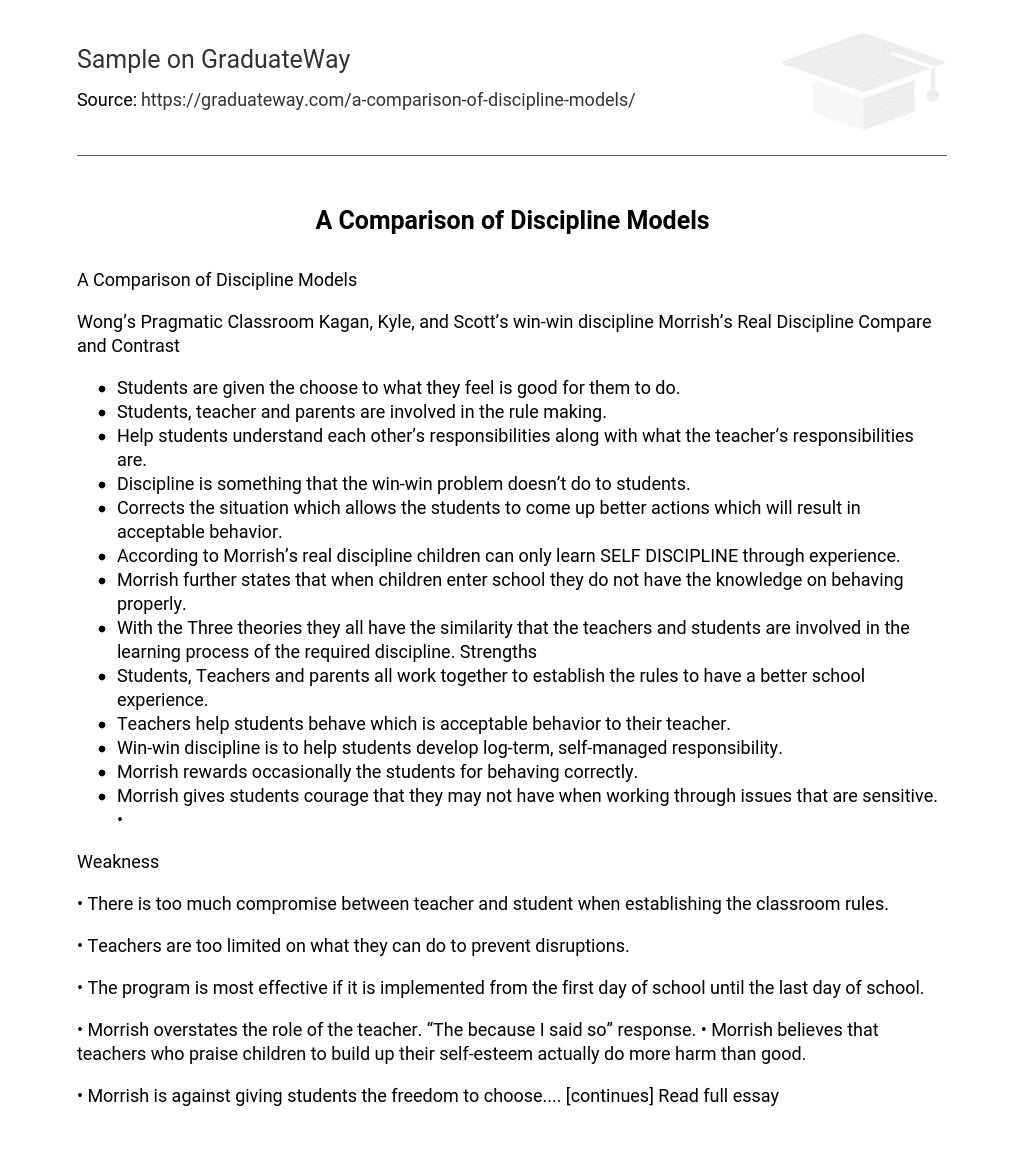When analyzing Wong’s Pragmatic Classroom, Kagan, Kyle, and Scott’s win-win discipline, and Morrish’s Real Discipline in terms of comparison and contrast.
- Students are given the choose to what they feel is good for them to do.
- Students, teacher and parents are involved in the rule making.
- Help students understand each other’s responsibilities along with what the teacher’s responsibilities are.
- Discipline is something that the win-win problem doesn’t do to students.
- Corrects the situation which allows the students to come up better actions which will result in acceptable behavior.
- According to Morrish’s real discipline children can only learn SELF DISCIPLINE through experience.
- Morrish further states that when children enter school they do not have the knowledge on behaving properly.
- With the Three theories they all have the similarity that the teachers and students are involved in the learning process of the required discipline. Strengths
- Students, Teachers and parents all work together to establish the rules to have a better school experience.
- Teachers help students behave which is acceptable behavior to their teacher.
- Win-win discipline is to help students develop log-term, self-managed responsibility.
- Morrish rewards occasionally the students for behaving correctly.
- Morrish gives students courage that they may not have when working through issues that are sensitive. •
Weakness
There is an excessive amount of compromise between the teacher and student when it comes to establishing the rules for the classroom.
Preventing disruptions presents challenges for teachers.
Using the program consistently from the beginning of the school year to the end yields the best results.
– According to Morrish, the teacher’s role is exaggerated with the response “because I said so.”
– Morrish argues that praising children to boost self-esteem is actually detrimental.
• Morrish opposes granting students the freedom to choose…. [continues] Read the complete essay.





